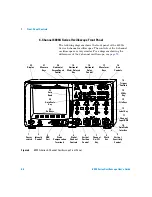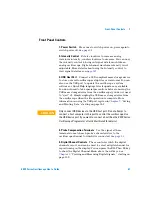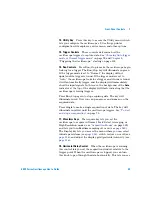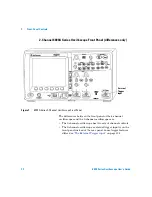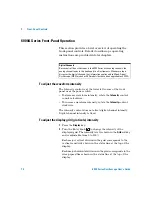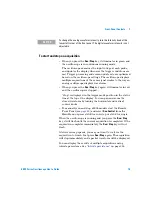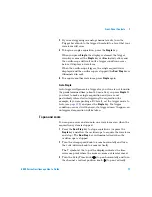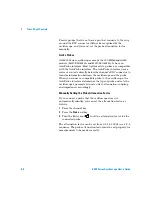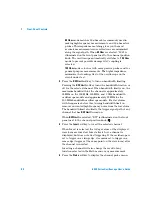
80
6000 Series Oscilloscope User’s Guide
2
Front-Panel Controls
Passive probes that do not have a pin that connects to the ring
around the BNC connector will not be recognized by the
oscilloscope, and you must set the probe attenuation factor
manually.
Active Probes
All 6000 Series oscilloscopes except the 100 MHz bandwidth
models (MSO/DSO6012A and MSO/DSO6014A/L) have an
AutoProbe interface. Most Agilent active probes are compatible
with the AutoProbe interface. The AutoProbe interface uses a
series of contacts directly below the channel’s BNC connector to
transfer information between the oscilloscope and the probe.
When you connect a compatible probe to the oscilloscope, the
AutoProbe interface determines the type of probe and sets the
oscilloscope’s parameters (units, offset, attenuation, coupling,
and impedance) accordingly.
Manually Setting the Probe Attenuation Factor
If you connect a probe that the oscilloscope does not
automatically identify, you can set the attenuation factor as
follows:
1
Press the channel key
2
Press the
Probe
softkey
3
Turn the Entry knob
to set the attenuation factor for the
connected probe.
The attenuation factor can be set from 0.1:1 to 1000:1 in a 1-2-5
sequence. The probe attenuation factor must be set properly for
measurements to be made correctly.
Summary of Contents for InfiniiVision DSO6014L
Page 2: ...Agilent Technologies Agilent 6000 Series Oscilloscopes User s Guide...
Page 59: ...58 6000 Series Oscilloscope User s Guide 1 Getting Started...
Page 109: ...108 6000 Series Oscilloscope User s Guide 2 Front Panel Controls...
Page 125: ...124 6000 Series Oscilloscope User s Guide 3 Viewing and Measuring Digital Signals...
Page 251: ...250 6000 Series Oscilloscope User s Guide 5 Making Measurements...
Page 287: ...286 6000 Series Oscilloscope User s Guide 6 Displaying Data Interpreting Decoded LIN Data...
Page 321: ...320 6000 Series Oscilloscope User s Guide 7 Saving and Printing Data...
Page 370: ......

